#tree ferns
Explore tagged Tumblr posts
Text
Remember to eat your veggies
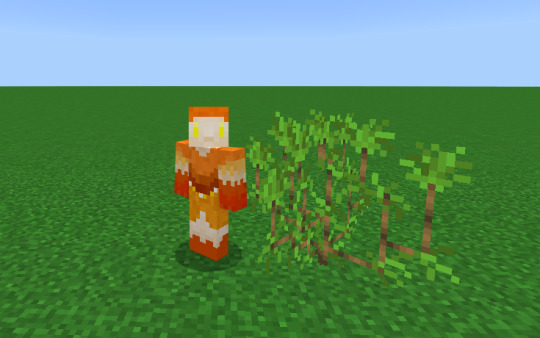
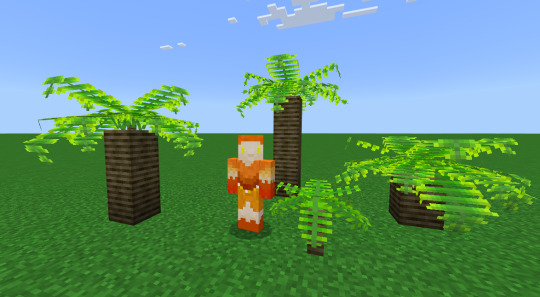


2 notes
·
View notes
Text
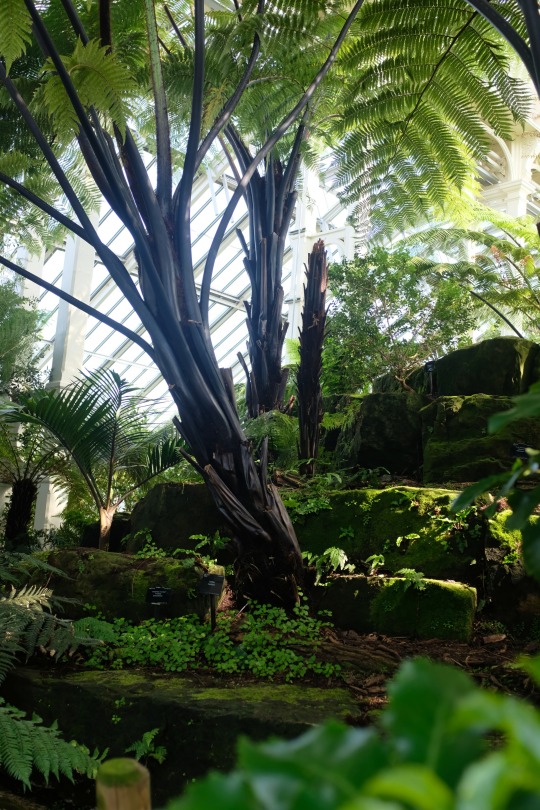
2023_06_05
3 notes
·
View notes
Text

In Case of an Apocalypse, Bet on Tree Ferns - by Kate Evans, Photography Credits - by Adrian Malloch | The New Zealand Geographic Magazine - Living World | March - April 2025
For all their Showiness, Tree Ferns are Extraordinary Survivors. They Hold Their Secrets Close - But Now, Scientists are Finding New Ways to Un-Furl Them.
In an underground carpark at the University of Auckland, James Brock manhandles patients out of a van and lugs them inside, their tops brushing doorways as he strides through the corridors of a windowless basement. On weekdays, this clinic is frequented by human patients, doctors, technicians and medical researchers.
This Saturday morning, however, it’s playing host to tree ferns—three of them, which until two days ago were lined up next to an array of other native ferns at a local garden centre.
In preparation for the appointment, the tree ferns must be immobilized. Brock, who is British, bearded, & an ecologist, winds plastic wrap around their trunks & lower fronds with the help of 2 technicians, Scott Jonas & Beau Pontré.

Ecologist James Brock wraps ponga in plastic for their appointment at the University of Auckland’s Centre for Advanced MRI. “This feels like an absurd kink,” he says, laughing. - Adrian Malloch
Jonas swaddles a ponga in a final layer of yellow plastic, then lays it on a gurney. Over top, he arranges a set of flexible foam & wire frames called coils. A topknot of foliage protrudes off the end of the gurney, and Pontré carefully adjusts the greenery so it won’t get caught in the machine. “We want all our patients to be comfortable,” he says.
Then Jonas wheels the gurney into the magnet room, its ceiling adorned with bright images of flowering pōhutukawa. He slides the strapped-up ponga inside a big white pod that looks like a giant sunbed. A Spotify “Just Chill” playlist is softly crooning inside.
Brock watches through the window in the neighbouring control room, crossing his fingers and muttering “please work!” under his breath. He and this unlikely team are probably the first people ever to give a tree fern an MRI.
*****
Tree ferns gave us one of Aotearoa’s most iconic symbols. The koru of an unfurling ponga or silver fern frond, ubiquitous in Māori carving and art, also features in the logos of our national airline and the Department of Conservation, while the full frond has adorned New Zealand sports and military uniforms for nearly 150 years. Fern fronds were laid on the graves of New Zealand soldiers, and in the 19th century, “Fernland” was even suggested as an alternative name for the country.
Most of us, pressed to name a native tree fern, would supply ponga—or punga. But the silver fern, with its distinctive two-tone fronds and monkey-tail koru, is just one of around 10 species of tree ferns that dot the New Zealand bush with their starry canopies.
There’s the gangly mamaku, or black tree fern, which can soar 20 metres high and grows throughout the Southwest Pacific, from Fiji to Rakiura. There’s scruffy whekī, one of our most common tree ferns, with a mess of dead fronds hanging around its trunk. The hairy whekī-ponga, or golden tree fern, sports a thicker and tidier skirt of dried red-brown foliage.
The creeping or mountain tree fern, beats the cold by growing sideways along the ground. Endemic kātote has soft, delicate fronds, is found on all New Zealand’s major islands, as well as the Sub-Antarctic Auckland Islands, making it the southernmost tree fern in the world.

A whole separate life stage from the full-size tree fern that technologist Scott Jonas carefully feeds into an MRI machine. - Adrian Malloch
Brock first fell in love with tree ferns in Kew Gardens’ palm house in London and the stately homes of Devon and Cornwall, where they were a fashionable garden addition. Moving to New Zealand to study them was a dream come true. “They’re fricking great,” he says. “They are really awesome plants, and they’re so prevalent in our forests here.” It’s not the aesthetics he talks about, but their track record: tree ferns were around before trees, he points out, and they’ve thrived ever since.
It’s also exciting, to Brock, that we know hardly anything about them. ���We’re still doing basic things like trying to figure out how old they get, what function they have in the forest, and how they use water.” Brock thinks he’s found an answer for why some of them have skirts, but not for why their bases are sometimes girded with thick, tangled mats of above-ground roots. “Just another little tree fern mystery.”
Even defining a tree fern is tricky. They’re not just ferns that look like trees: some of the 600-odd species that botanists call tree ferns don’t have trunks at all, while other ferns that do have trunks haven’t earned the “tree” label. Taxonomic arguments abound.
But whatever you call them, tree ferns are badass. Right after the asteroid impact that ended the Cretaceous Period 66 million years ago, there’s a layer in the fossil record dubbed the “fern spike”—wall to wall fern spores, and almost nothing else. At a time when three-quarters of plants and animals were snuffed out, ferns were thriving. Why?
US scientists funded by NASA recently re-created a mini Cretaceous in a greenhouse, grew a bunch of ferns and other plants, then simulated a meteor impact—blocking out the light, plunging the temperature, and painting leaves and fronds with sulphuric acid to mimic acid rain.
After this apocalypse, the ferns lay dormant for a while. But then they resprouted—their energy-packed underground rhizomes, numerous spores, and ability to photosynthesise in low light giving them an initial advantage over other plants. These early fern-forests, the study found, likely paved the way for the eventual regeneration of our scorched planet.
Significantly, the most resilient fern-form of all was the tiny gametophyte—the part of the life cycle that sexually reproduces. Hang on, what? Turns out it’s complicated, so Brock and I decide to meet one lunchtime in the Auckland Domain for a quick fern sex-ed session.
*****
We slide down a slippery bank to a creek overhung with ponga, karaka, nīkau & umbrella fern.

Well, yes. Isn’t it? “Actually, there’s a whole extra step in the process, a whole other life-form.” It’s hard to explain it in human terms, he says, but he gives it a red-hot go. “It’s like if our dandruff became another little animal that then had sex, and that little horny dandruff had human babies.” We’ve come here so Brock can show me what that horny tree fern dandruff looks like.
It takes him only a few seconds to find some. “Here we go!” he says, pointing to a mossy crevice on the bank of the creek. “Here’s a couple of fern gametophytes. If you look down in there they’re almost glowing.”
I’m gobsmacked. They’re minuscule—about the size of a fingernail, bright green, and shaped like a flat heart, or—“that one looks more like a butt,” says Brock. He points out a tiny lobed leaf emerging from the disc. “That’s a little baby sporeling. So these two gametophytes have had sex, and that is a new little fern growing.”

The Underside of a Silver Fern is Speckled with Sori, Each Packed With Spores - Adrian Malloch

On the Forest Floor, Spores Grow into Tiny Gametophytes. - Adrian Malloch
Are they tree ferns? “It’s impossible to tell,” he says. There are thousands of fern species, and most of their gametophytes look basically the same. You can’t even tell them apart under a microscope—only via DNA test.
But let’s say this is a ponga, like the ones lining the creek. Once fertilised, the tiny green thumbnail will shrivel and die. Given years, probably decades, the leaf emerging from it will grow into the ponga tree we know and love. At this stage, botanists call the plant a sporophyte, because it’s the life-form that makes spores. Regiments of round brown sori the size of poppy seeds will form on its fronds. Now comes a game of Russian dolls. Inside each sori are around 64 sporangia, and in each sporangium are 64 spores, Brock explains. “These things are very mathematical.”
Sporangia are built like tiny catapults. When they’re ready, they explode open, collectively flinging gazillions of spores out into the landscape to waft on the wind. In the right conditions, a spore will germinate, growing into a heart-shaped gametophyte, which can produce both sperm & eggs. We’re not sure if ponga can self-fertilize, Brock says, so to reproduce, it will likely need another gametophyte within sperm-swimming distance - about 2.5 centimeters.

When that sperm wriggles through the damp soil over to an egg, and fertilisation occurs, a new ponga tree will eventually grow on the spot.
This bizarre life cycle has persisted practically unchanged for hundreds of millions of years. Emerging science, like the NASA-funded study, seems to suggest that these fern mini-mes may be at the root of the plants’ resilience in the face of dramatic change.
“The more we learn about gametophytes, the more we realise they aren’t pathetic little wimpy things; they’re actually incredibly stress tolerant,” says Brock. In Tahiti and Japan, scientists have found fern gametophytes thriving in areas where no sporophytes of that species currently grow. It might sound like wasted effort—gametophytes mating away in places their offspring can’t survive—but to Brock and some other scientists, these outposts look like “the leading edge of a population”.
On a planet changing as fast as ours, ferns’ unusual life cycle and extra-hardy gametophytes could give them an advantage over other plants. “It will help them move very, very rapidly,” Brock says.
So if we want to know how climate change will hit our forests, we need to know more about tree ferns. Especially since, in most types of New Zealand forest, they make up somewhere between a third and a half of all trees. In pine forests, tree ferns outnumber pine. *****
In early summer, I walk with Brock down a rural West Auckland road and onto an unmarked, overgrown path. This is Huapai Reserve, 15 hectares of mixed broadleaf and kauri forest belonging to the University of Auckland and set aside for science experiments. We wash our boots at the cleaning station, then Brock points up to a nearby ponga.
Tree ferns cast a shadow, he says, their overlapping fronds preventing about half of the available light from reaching the forest floor. When each frond drops, it might take out a few seedlings as it crashes to the ground. The fronds also create deep, dry litter that breaks down slowly, gradually releasing nutrients.

Brock Removes Tape Used to Mark Tree Ferns in Auckland’s Huapai Reserve. His Team Investigated how Ponga Influence Which Seedlings Survive Beneath Them. - Adrian Malloch
Brock and his students have been interfering with this process in the hopes of better understanding it. Here in the Huapai Reserve they marked out 80 ponga and split them into four groups. The first lot they left alone. With the second group they got choppy, taking out half of the canopy on each tree’s north side to allow light back in. The third group received regular grooming—the students continually removed all the litter from the base of the ferns. The last group got both the chop and the cleanup.
“After a year, we saw very, very different seedlings regenerating in the different plots,” Brock says. Left to their own devices, ponga were inhibiting the growth of trees such as rimu, kauri and tānekaha, while favouring smaller shade-dwellers such as coprosma and māhoe.
While that might sound negative for forest regeneration—particularly if we want to see more large podocarps—tree ferns aren’t necessarily the bad guys here, Brock says. They’re more like agents of chaos.
Since Darwin, scientists have been trying to get to the bottom of why diversity exists, he explains. If conditions in a certain place are suitable for a species, why doesn’t that species utterly dominate? Plantation pine forests are monocultures, but we don’t see that in nature. Why aren’t there whole hillsides covered in, say, rimu and nothing else?
Tree ferns may play a part in keeping our forests diverse, Brock theorises—even in crowds they don’t form an entirely solid layer. This means they break up light across the forest, creating different kinds of habitat and adding complexity. At a local scale a ponga might prevent a rimu from growing. But across a forest, by filtering out some rimu seedlings, the fern may actually give those that remain more room to grow. “You end up with less competition in the canopy, so the conifers last longer, and they’re more spaced out.”
*****
While trying to build a model of New Zealand forest dynamics that accurately accounted for the role of tree ferns, Brock realised he needed to know how long they live for.
Ageing a tree fern, it turns out, is a lot more difficult than ageing a tree. You can cut a tree down and count the rings, or you can drill a pencil of wood from its centre and do the same. But tree ferns don’t have rings. Their fronds grow upwards in a whorling, deeply predictable spiral—in ponga, for instance, it takes precisely 13 fronds to complete a full rotation—and the girth of their trunk does not increase every year.


A few years ago, Janet Wilmshurst, an ecologist with Manaaki Whenua–Landcare Research, realised she needed to dig into the puzzle of tree fern lifespan. She was trying to understand how they influence forest structure over time.
“Lifespan is a fundamental life history trait of a plant - if something’s around for 20 or 500 years, that makes a big difference in a forest, especially given how significant tree ferns are in nearly all NZ forest types,” she says. And she suspected Aotearoa’s species - including our leggy, fresh-faced tree ferns - might just look young for their age.

“Lots of our organisms are much older than expected—long-lived, slow-breeding animals like kākāpō and tuatara. Even our tussock grasses are suspected to be really old. So what about tree ferns? We really didn’t know.”
In a pilot project, Wilmshurst collaborated with the Tūhoe Tuawhenua Trust in Te Urewera. “We wanted to understand the composition of our forest, what’s our resource,” says trustee Brenda Tahi. She’d been surprised by previous research showing that ponga—kaponga, to Tūhoe—were very widespread in Te Urewera, and combined with grazing deer, were possibly affecting the regeneration of large podocarps.
For hundreds of years, Tūhoe had used tree ferns for exterior cladding and roofing on their whare, and to help preserve potato crops after harvesting. Now, they wanted to understand as much as they could about how the tree ferns were tweaking the under-pressure ngāhere.
Wilmshurst, 2 other Manaaki Whenua researchers & Tūhoe Kaumātua & forester James Tahae Doherty identified a couple of ancient-looking tree ferns, a whekī-ponga & a kaponga - surrounded by very large trees & diverse, mature forest on Doherty’s land near Ruatāhuna. “They were the biggest, fattest ones we could find,” says Wilmshurst.

Tūhoe Forester & Kaumātua James Tahae Doherty Fells an Ancient Whekī-Ponga on his Land at Ngāputahi, in Te Urewera, so That Scientists Can Radio-Carbon Date its Core. For 100's of Years, the Trunk had Hosted Mosses & Epiphytes - Another Key Role These Trees Play in the New Zealand Bush. - Adrian Malloch
Doherty cut the tree ferns down with a chainsaw and sliced a cross section from the very base of each one. Later, Wilmshurst used a microscope to identify the oldest part of the plant tissue, then sent it off for radiocarbon dating. The work has not yet been published, but the preliminary results are exciting, she says. “They are consistent with the age of some of the canopy trees—in excess of 300 years.” It’s amazing, she says, to think that these tree ferns would have grown up in the company of birds such as moa, kākāpō, huia and piopio.
The trouble with carbon dating is you have to kill the plant to do it. Brock, meanwhile, is working on a model that can estimate an individual tree fern’s age from its height. So far, his results are lining up with Wilmshurst’s—tree ferns can live for hundreds of years.
*****
Living for three centuries means suffering through a lot of winters. So tree ferns have developed certain quirks to improve their comfort. In a recent side project, Brock and his collaborators investigated why some New Zealand tree ferns leave their dead fronds dangling down around their trunks like the feathery layers of a korowai—or a shaggy brown skirt.
They surveyed tree ferns from north to south and from the coast to the mountains and found that in colder places, the ferns were more likely to have a skirt. To test the theory that the hanging fronds functioned as insulation, they used a pair of devices called a thermocouple, recording temperatures outside each skirt and beneath it.
“We had to get the thermocouples in under the skirt without disturbing it too much,” says Brock. (“It’s very hard to talk about this without sounding fecking creepy!”) The results were dramatic, especially for the thick skirts of Dicksonia fibrosa, the whekī-ponga. “It’s insane; their insulatory potential is incredible.”
On the coldest night, near midwinter, the skirts kept the trunks 4.5 degrees Celsius warmer than outside, reducing the number of hours they spent below freezing by 90 per cent. Conversely, when the summer mercury hit 25 degrees, the beskirted tree fern trunk enjoyed a cool 15 degrees.

In Huapai Reserve, Brock points out an epiphyte: a tiny hangehange, or native privet, happily growing from a ponga stem. This is another way tree ferns shape forest structure, he says—they allow up-and-comers to hitch a ride.
Seedlings of all sorts use tree ferns to give them a boost into the light or out of reach of browsers. In deer-ravaged southern Fiordland, scientists from the University of Cambridge and Manaaki Whenua found that 60 per cent of full-grown kāmahi started life clinging to a tree fern. Eighty-five per cent of the whekī tree ferns they examined were hosting epiphytes on their trunks.
Brock has seen a kauri sapling growing on the black, hairy trunk of a mamaku, and a whekī tree fern piggy-backing on a ponga. Originally, he thought that pioneer species, good at dealing with lots of light and little water, would be more likely to grow at the top of a tree fern, while shade and damp-loving species would be found near the bottom of their trunks���where he assumed water would collect.
Nope. The water-lovers seemed to fancy the top of tree ferns. That made Brock wonder what was going in a tree fern’s vascular system. How was it moving water around, and storing it?
“Understanding how plants use water basically defines how they function in an ecosystem, and also how they’re going to respond to environmental change,” he says. “So if we want to know how our forests are going to change under different climate conditions… well, tree ferns make up vast swathes of the forest, we know they’re really functionally important, but we have no idea how they’re going to respond.”
To figure it out, you’d need to look inside a living tree fern to see where the water was going in real time—something Brock had always written off as impossible. But one day, he happened to mention it to a neurologist friend at a dinner party. “Why not use an MRI?” the friend suggested.
*****
At the University of Auckland, the MRI pod beeps, and the first scans appear on the control room’s computer screens. The ponga’s insides are revealed in black and white and three dimensions. Jonas can rotate the image, showing the koru forming at the tree fern’s head. When he flips it 90 degrees, the trunk is in cross section, and we can see wavy dark lines looping around the perimeter. Brock calls them “staples”, and says they represent the vascular tissue—the part of a plant that transports water and nutrients.
These structures are easy to see, but figuring out how water moves through them and where it’s stored is more complicated. “We’re still trying to trace them, and see how they work and what they connect to.”
Jonas pulls the gurney out of the machine and wheels it back into the corridor for the next stage of the experiment.
The team are hoping that a contrast dye called gadolinium, or gad for short, might work in ponga like it does in humans. A person with gad on board gives better MRI: the scans come out much clearer, meaning organs and tumours are more visible. Gad is used in about a third of human MRIs, and is injected via an intravenous line. A ponga doesn’t have veins, so instead, Brock performs open-root surgery, cutting a hole near the tree’s root-bound base with a knife and pouring the gad in. Then the ponga is wheeled back into the magnet room and scanned again.


MRIs Map the Paths of Liquid Flowing Within an Object - as the Blue Squiggles on This Early Scan Show. - Adrian Malloch
Jonas and Pontré debate which of the MRI calibrations to use. Perhaps the setting for spines? Legs? Hips? “Scanning a finger is a lot different than scanning a head,” says Jonas. “I was thinking leg, because I thought it would be roughly cylindrical, and long—but we’ve used something from the pelvis as well.”
Today, the experiments are inconclusive. The team can’t tell whether the ponga is absorbing the gadolinium, or even what represents the liquid on screen—is it the dark bit or the light bit? “Trying to pick up a signal in that tissue when the machines are designed for people is really challenging,” says Brock. Are we seeing water, gadolinium, sap? “The sap is far denser than blood. It’s like a thick, sticky goop.”
Part of the problem is temporal. MRI machines are designed to pick up the movement and flow direction of blood as it’s pumped around a human body, heartbeat by heartbeat. In a heartless plant, liquid moves much more slowly. “A centimetre per second is the slowest flow the machine can pick up,” says Pontré. “But even that is really pushing the capability of the scanner.”
A few weeks after my visit, Brock and the team try again. This time, they cut single fronds off a tree fern and soak the raw edges in varying concentrations of gadolinium—picture cut flowers in a vase of water. Then they leave them in the MRI overnight, setting it to scan every two minutes for eight hours.
By stacking up all the images, they could see the gad at last—a dull grey, moving just 20 centimetres in the course of the night. It’s a start, but they’ll need to do several more sets of trials, including with another contrast agent, manganese, before they’re ready to design a proper experiment they hope will reveal the tree ferns’ watery secrets.

Brock, Flanked by MRI Techs Beau Pontre (Left) & Scott Jonas, Try to Work Out How Best to Scan a Tree Fern. - Adrian Malloch
As they work, the medical technicians toss words between them that neither Brock nor I can understand. Brock has his own botanical jargon, too—stipe, vasculature, meristem, lignin. “This is why, initially, the project was so challenging,” he says. “We’re still trying to get to a point where we have a common language.”
There’s something universal, though, about the thrill of a challenge. “You can see how excited they are,” says Brock. “There’s a huge number of people in this institution who are just getting involved in the project because it’s cool.”
Meanwhile, in gardens & gullies, & the deepest reaches of our national parks, millions of tree ferns are preoccupied instead with ancient, botanical maths: catapulting spores in tidy multiples of 64, building spirals frond by frond, ratcheting ever upwards toward the stars.
More - by Kate Evans , More - by Adrian Malloch
#natural history#tree ferns#tree fern#plants#living fossil#new zealand#prehistoric life#new caledonia
1 note
·
View note
Text
The Lost Gardens of Heligan
I had the opportunity to visit the legendary gardens, The Lost Gardens of Heligan, in the Spring of 2023, located near St. Austell, Cornwall. One of Europe’s largest garden restoration projects, and on the bucket list for any adventurous gardener, Heligan (means willow tree) is one of the most fascinating estates in England. Also named the garden of the year in 2018 by the BBC, the weather was…
#bee boles#bluebells#Cornwall#garden travel#growing pineapples#Heligan#Lost Gardens of Heligan#pineapple pit#rare breeds at Heligan#The Jungle#thunderbox#tree ferns#tree ferns at heligan#UK war memorial
0 notes
Text

Rhapsody in Green
#artists on tumblr#original photographers#original photography#hiking#pacific northwest#washington#pnw#nature#nikon#orofeaiel#barnes creek#marymere falls#olympic national park#creek#stream#forest#ferns#trees#explore#landscape
3K notes
·
View notes
Text
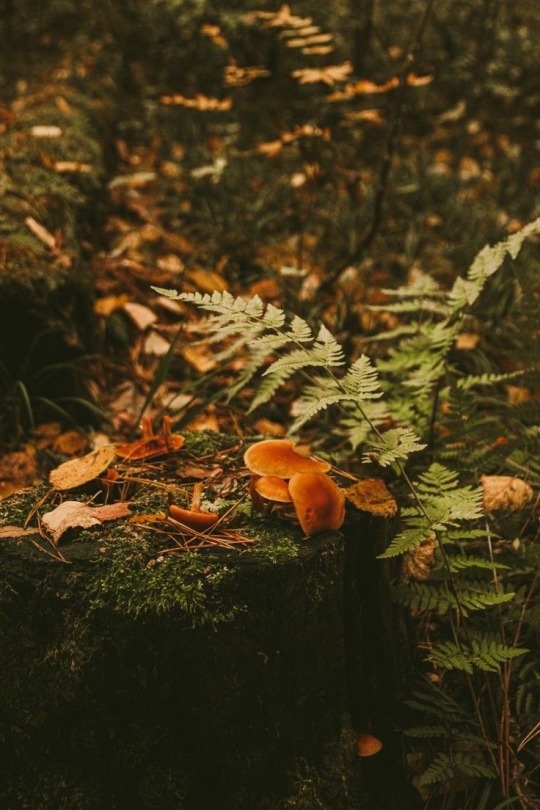
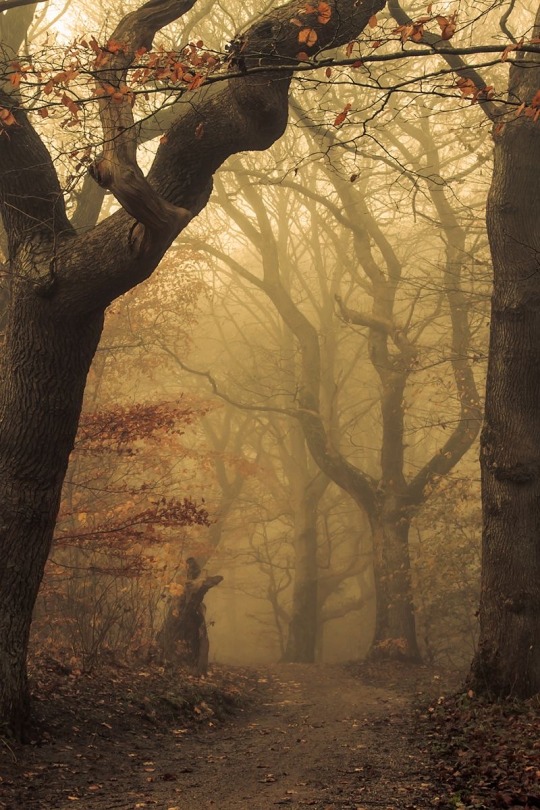






I think a walk in a forest in fall would fix me ✨
#fall#autumn#fall blog#halloween#spooky#autumn blog#cozy#autumn aesthetic#leaves#fall aesthetic#fall foliage#fall color#forest#mushrooms#trees#source: pinterest#ferns#berries#foggy forest
6K notes
·
View notes
Text


" Abiqua Falls " // © Jake Guzman
#Abiqua Falls#Oregon#United States#nature#landscape#Waterfall#Rainforest#Trees#Pond#Vegetation#Grass#Ferns#Green#photography#aesthetics#wanderlust#explore#follow#discover
3K notes
·
View notes
Text





Not much Fall color yet, but the park was still pretty
4K notes
·
View notes
Text


Old growth trees on the Olympic Peninsula
#forests#forest aesthetic#olympic national park#old growth forest#pnw#washington state#ferns#trees#olympic peninsula#quinault rain forest#rain forest#big trees
4K notes
·
View notes
Text

Dreaming of summer
#woodland#woods#forest#forestcore#pines#ferns#trees#nature#nature photography#original photographers#photographers on tumblr#naturecore#photography
3K notes
·
View notes
Photo
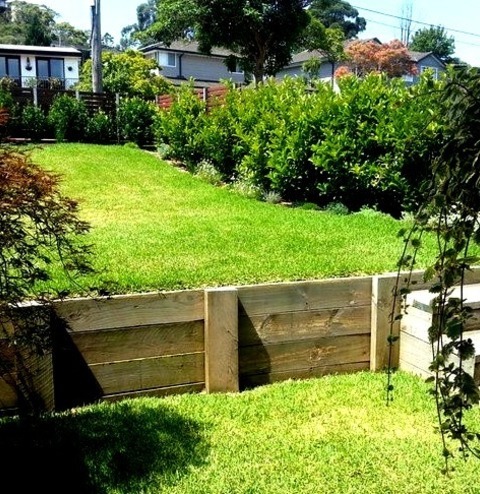
Landscape Retaining Walls Here is an illustration of a sizable, modern, full-sun front yard landscape with retaining walls in the summer.
0 notes
Photo
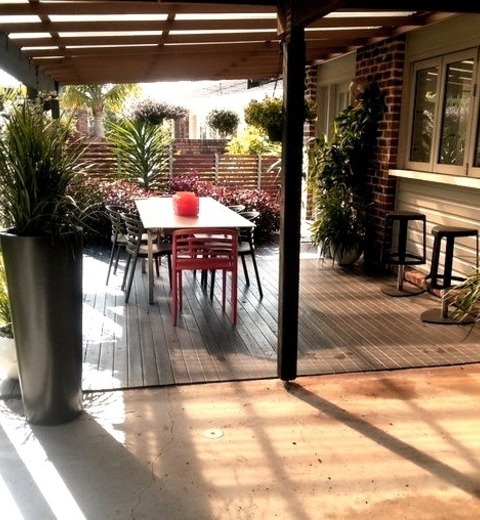
Patio Decking Sydney Medium-sized, fashionable front yard patio image with decking and a canopy
0 notes
Text


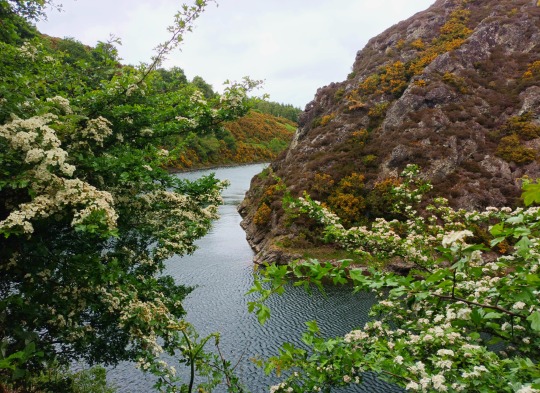
hideaway
#edinburgh#scotland#photography#reservoir#hills#trees#ferns#flowers#waterscape#photographers on tumblr
560 notes
·
View notes
Photo

Driveway - Contemporary Landscape Design concepts for a modern front yard driveway with decking that receives some sunlight and privacy.
0 notes
Text

Sunlight on mossy forest floor | Tahuya, WA
#artists on tumblr#original photographers#original photography#hiking#pacific northwest#nature#washington#nikon#pnw#orofeaiel#moss#mossy#forest floor#sunlight#forest#trees#naturecore#tahuya#ferns#green
1K notes
·
View notes
